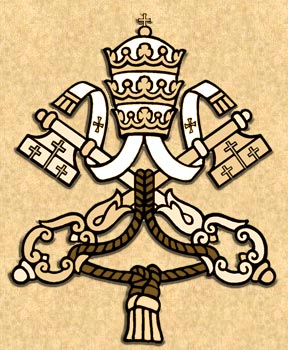Practically every page in the history of the French Revolution is stained with blood. What is known in history as the Carmelite Massacre if 1792, added nearly 200 victims to this noble company of martyrs. They were all priests, secular and religious, who refused to take the schismatic oath, and had been imprisoned in the church attached to the Carmelite monastery in Paris. Among these priests were a Conventual, a Capuchin, and a member of the Third Order Regular.
John Francis Burte was born in the town of Rambervillers in Lorraine. At the age of 16 he joined the Franciscans at Nancy and there he also pronounced his solemn vows. In due time he was ordained a priest and for some time taught theology to the younger members of the order. He was at one time also superior of his convent.
After Pope Clement XIV, formerly a Conventual friar, had ordered the merging of the province of the Franciscans, to which John Francis belonged, with the Conventuals, Father john Francis was placed in charge of the large convent in Paris and encouraged his brethren to practice strict observance of the rule. His zeal for souls was outstanding, and he zealously guarded the rights of the Church in this troubled period of history.
When the French Revolution broke out, he was reported for permitting his priests to exercise their functions after they refused to take the infamous oath required by the government, and which was a virtual denial of their Faith. He was arrested and held captive with other priests in the convent of the Carmelites. His constancy in refusing to take the sacrilegious oath won for him a cruel martyrdom on September 2, 1792.
Apollinaris of Posat, who was John James Morel before his entrance into religion, was born near Friboug in Switzerland in 1739, and received his education from the Jesuits. In 1762 he joined the Capuchins in Zug and before long became a prominent preacher, a much-sought confessor, and an eminent instructor of the young clerics of the order/ He impressed on their minds the truth that piety and learning are the two eyes of a priest, and humility was a
dominating virtue in his life.
In 1788 he was to be sent to the East as a missionary, and so he paused at Paris to study Oriental languages in preparation for his new appointment. But the French Revolution broke out while he was there, and because he steadfastly refused to take the oath of allegiance, he, too, was imprisoned in the Carmelite convent and suffered a cruel martyrdom on September 2, 1792.
The priest of the Third Order Regular was Blessed Severin, formerly George Girault, whose undaunted courage merited the grace to be numbered among these martyrs of Christ. He was born at Rouen in Normandy, and early in life joined the Third Order Regular of St. Francis. Because of his eminent mental gifts he was chosen a superior of his order. In the exercise of his priestly duties he displayed marked zeal for souls, and as chaplain of the convent of St. Elizabeth in Paris he was a prudent director in the ways of religious perfection.
He was also summoned to take the civil oath, and upon his refusal to do this he was seized and confined in the Carmelite convent where so many other confessors of Christ were being detained. On September 2, while he was saying his Office in the convent garden, the raving assassins made him the first victim of their cruel slaughter.
These three members of the Franciscan Order, together with 182 other servants of God who suffered martyrdom at this time, were solemnly beatified by Pope Pius XI, and the Franciscan Order was granted permission to celebrate their feast annually with an Office and special Mass.
Evil triumphs when good men do nothing - Edmund Burke
Wednesday, September 2, 2009
Subscribe to:
Comments (Atom)








